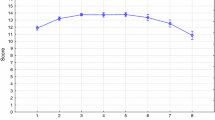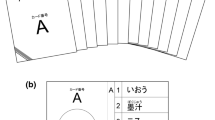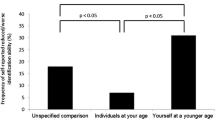Abstract
Objective
Exposure to particulate matter of 10 μm or less in diameter (PM10) has been implicated in pulmonary and cardiovascular diseases. However, the effect of PM10 on olfaction has not been well established. We estimated individual acute and chronic PM10 exposure levels in a large Brazilian cohort and related them to the ability to identify odors.
Methods
Adults from São Paulo (n = 1358) were recruited from areas with different levels of air pollution. To verify individual exposure to air pollution, the averages of 30, 60, 90, 180 and 364 days of PM10 were interpolated to subjects’ zip codes using the kriging method. Olfactory identification performance was tested using the University of Pennsylvania Smell Identification Test (UPSIT®). Multiple linear regressions were used to calculate the effect of air pollution on olfactory identification performance, controlling for demographic and other variables that affect the sense of smell.
Results
Acute exposures to PM10 were related to worse UPSIT® scores, including 30- (β = – 0.94, 95% Confidence Interval [CI] – 0.98, – 0.89), 60- (β = – 1.09, 95% CI = – 1.13, – 1.04) and 90-day intervals (β = – 1.06, 95% CI – 1.10, – 1.02) (reference for β: 1 µm/m3 increase in PM10 exposure per point decrease in UPSIT® score). Chronic exposures were also associated with worse olfaction for both 180- (β = – 1.06, 95% CI – 1.10, – 1.03) and 364-day (β = – 0.87, 95% CI – 0.90, – 0.84) intervals. As in prior work, men, older, low-income, and low-schooling people demonstrated worse olfactory performance.
Conclusion
Acute and chronic exposure to PM10 is strongly associated with olfactory identification performance in Brazilian adults. Understanding the mechanisms which underlie these relationships could help to improve chemosensory function with a large public health impact.

Similar content being viewed by others
Data availability
The datasets generated during and/or analyzed during the current study are available from the corresponding author upon reasonable request.
References
Adams DR, Ajmani GS, Pun VC, Wroblewski KE, Kern DW, Schumm LP, McClintock MK, Suh HH, Pinto JM (2016) Nitrogen dioxide pollution exposure is associated with olfactory dysfunction in older US adults. Intl Forum Allergy Rhinol 6(12):1245–1252. https://doi.org/10.1002/alr.21829
Ajmani GS, Suh HH, Wroblewski KE, Kern DW, Schum LP, McClintock MK, Yanosky JD, Pinto JM (2016) Fine particulate matter exposure and olfactory dysfunction among urban-dwelling older US adults. Environ Res Perspect 151:797–803. https://doi.org/10.1016/j.envres.2016.09.012
Auinger AB, Besser G, Liu DT, Renner B, Mueller CA (2020) Long-term impact of olfactory dysfunction on daily life. Central Eur J Med. https://doi.org/10.1007/s00508-020-01751-5
Calderón-Garcidueñas L, Villarreal-Calderon R, Valencia-Salazar G, Henríquez-Roldán C, Gutiérrez-Castrellón P, Torres-Jardón R, Osnaya-Brizuela N, Romero L, Torres-Jardón R, Solt A, Reed W (2008) Systemic inflammation, endothelial dysfunction, and activation in clinically healthy children exposed to air pollutants. Inhal Toxicol 20(5):499–506. https://doi.org/10.1080/08958370701864797
Calderón-Garcidueñas L, Franco-Lira M, Henríquez-Roldán C, Osnaya N, González-Maciel A, Reynoso-Robles R, Villarreal-Calderon R, Herritt L, Brooks D, Keefe S, Palacios-Moreno J, Villarreal-Calderon R, Torres-Jardón R, Medina-Cortina H, Delgado-Chávez R, Aiello-Mora M, Maronpot RR, Doty RL (2010) Urban air pollution: Influences on olfactory function and pathology in exposed children and young adults. Exp Toxicol Pathol 62(1):91–102. https://doi.org/10.1016/j.etp.2009.02.117
Calderón-Garcidueñas L, Serrano-Sierra A, Torres-Jardón R, Zhu H, Yuan Y, Smith D, Delgado-Chávez R, Cross JV, Medina-Cortina H, Kavanaugh M, Guilarte TR (2013) The impact of environmental metals in young urbanites’ brains. Exp Toxicol Pathol 65(5):503–511. https://doi.org/10.1016/j.etp.2012.02.006
Deng H-Y, Feng J-R, Zhou W-H, Kong W-F, Ma G-C, Hu T-F, Luo S-G, Xi Y, Zhang Y, Yang Q-T (2020) Olfactory sensitivity is related to erectile function in adult males. Front Cell Dev Biol 8:93. https://doi.org/10.3389/fcell.2020.00093
Dias D, Tchepel O (2018) Spatial and temporal dynamics in air pollution exposure assessment. Int J Environ Res Public Health 15(3):E558. https://doi.org/10.3390/ijerph15030558
Doty RL (2007) Office procedures for quantitative assessment of olfactory function. Am J Rhinol 21(4):460–473. https://doi.org/10.2500/ajr.2007.21.3043
Doty RL (2019) Epidemiology of smell and taste dysfunction. In: Handbook of Clinical Neurology. pp 3–13
Doty RL, Shaman P, Applebaum SL, Giberson R, Siksorski L, Rosenberg L (1984) Smell identification ability: changes with age. Science 226(4681):1441–1443. https://doi.org/10.1126/science.6505700
Duncan HJ, Seiden AM (1995) Long-term follow-up of olfactory loss secondary to head trauma and upper respiratory tract infection. Arch Otolaryngol Head Neck Surg 121(10):1183–1187. https://doi.org/10.1001/archotol.1995.01890100087015
Fornazieri MA, de Pinna F, R, Bezerra TFP, Antunes MB, VoegelsRL, (2010) Applicability of the university of pennsylvania smell identification test (SIT) in Brazilians: pilot study. Braz J Otorhinolaryngol 76(6):695–699. https://doi.org/10.1590/S1808-86942010000600004
Fornazieri M, Doty R, Santos C, Pinna F, Bezerra T, Voegels R (2013) A new cultural adaptation of the University of Pennsylvania Smell Identification Test. Clinics 68(1):65–68. https://doi.org/10.6061/clinics/2013(01)OA10
Fornazieri MA, dos Santos CA, Bezerra TFP, de Pinna F, R, Voegels RL, Doty RL, (2015) Development of normative data for the Brazilian adaptation of the University of Pennsylvania Smell Identification Test. Chem Senses 40(2):141–149. https://doi.org/10.1093/chemse/bju068
Fornazieri MA, Doty RL, Bezerra TFP, de Pinna F, R, Costa FO, Voegels RL, Silveira-Moriyama L, (2019) Relationship of socioeconomic status on olfactory function. Physiol Behav. https://doi.org/10.1016/j.physbeh.2018.10.011
Genter MB, Doty RL (2019) Toxic exposures and the senses of taste and smell. In: Handbook of Clinical Neurology. pp 389–408
Goette WF, Werry AE, Schmitt AL, Goette WF, Werry AE, The ALS (2017) The relationship between smell identification and neuropsychological domains: Results from a sample of community-dwelling adults suspected of dementia Results from a sample of community-dwelling adults suspected of dementia. J Clin Exp Neuropsychol. https://doi.org/10.1080/13803395.2017.1399985
Guarneros M, Hummel T, Martínez-gómez M, Hudson R (2009) Mexico City air pollution adversely affects olfactory function and intranasal trigeminal sensitivity. Chem Senses 34(9):819–826. https://doi.org/10.1093/chemse/bjp071
Guarneros M, López-Rivera C, Gonsebatt ME, Alcaraz-Zubeldia M, Hummel T, Schriever VA, Valdez B, Hudson R (2020) Metal-containing particulate matter and associated reduced olfactory identification ability in children from an area of high atmospheric exposure in Mexico City. Chem Senses 45(1):45–58. https://doi.org/10.1093/chemse/bjz071
Han B, Hu L-W, Bai Z (2017) Human exposure assessment for air pollution. Adv Exp Med Biol 1017:27–57. https://doi.org/10.1007/978-981-10-5657-4_3
Hudson R, Arriola A, Martínez-Gómez M, Distel H (2006) Effect of air pollution on olfactory function in residents of Mexico City. Chem Senses 31(1):79–85. https://doi.org/10.1093/chemse/bjj019
Hugh SC, Siu J, Hummel T, Forte V, Campisi P, Papsin BC, Propst EJ (2015) Olfactory testing in children using objective tools: comparison of Sniffin ’ Sticks and University of Pennsylvania Smell Identification Test (UPSIT). J Otolaryngol Head Neck Surg. https://doi.org/10.1186/s40463-015-0061-y
Jerrett M, Burnett RT, Brook JR (2001) A GIS ^ environmental justice analysis of particulate air pollution in Hamilton, Canada. Environ Plan 33:955–973. https://doi.org/10.1068/a33137
Jerrett M, Arain A, Kanaroglou P, Beckerman B (2005) A review and evaluation of intraurban air pollution exposure models. J Exposure Sci Environ. https://doi.org/10.1038/sj.jea.7500388
Komatsu CE, Muramoto CA, Lopez CFF, Lopes DS, Franco DMP, Anastacio IA, Romano J, Oliveira MCN de, Martins MHRB, Gonçalves ML, Guardani, YY (2011) Qualidade do ar no estado de São Paulo. São Paulo
Liu DT, Besser G, Prem B, Sharma G, Speth MM, Sedaghat AR, Mueller CA (2021) Self-perceived taste and flavor perception: associations with quality of life in patients with olfactory loss. Otolaryngol Head Neck Surg 164(6):1330–1336. https://doi.org/10.1177/0194599820965242
Lucchini RG, Guazzetti S, Zoni S, Benedetti C, Fedrighi C, Peli M, Donna F, Bontempi E, Borgese L, Micheletti S, Ferri R, Marchetti S, Smith DR (2014) Neurofunctional dopaminergic impairment in elderly after lifetime exposure to manganese. Neurotoxicology. https://doi.org/10.1016/j.neuro.2014.05.006
Murphy C, Schubert CR, Cruickshanks KJ, Klein BEK, Klein R, Nondahl DM (2002) Prevalence of olfactory impairment in older adults. JAMA 288(18):2307–2312. https://doi.org/10.1001/jama.288.18.2307
Otorhinolaryngol EA, Draf JRC, Hummel RAFT (2015) Comparison of clinical tests of olfactory function. Eur Arch Oto-Rhino-Laryngol. https://doi.org/10.1007/s00405-015-3682-x
Petruccelli JL, Saboia AL (2013) Características étnico-raciais da população: classificações e identidades. IBGE, Rio de Janeiro
Pinto JM, Schumm LP, Wroblewski KE, Kern DW, McClintock MK (2014) Racial disparities in olfactory loss among older adults in the United States. J Gerontol Series A Biolog Sci Med Sci 69 A(3):323–329. https://doi.org/10.1093/gerona/glt063
Poindexter SA, Garrett EC (2020) Particle deposition and sensory drive. Evolut Anthropol. https://doi.org/10.1002/evan.21855
Ranft U, Schikowski T, Sugiri D, Krutmann J, Krämer U (2009) Long-term exposure to traffic-related particulate matter impairs cognitive function in the elderly. Environ Res 109(8):1004–1011. https://doi.org/10.1016/j.envres.2009.08.003
Sánchez-Vallecillo MV, Fraire ME, Baena-Cagnani C, Zernotti ME (2012) Olfactory dysfunction in patients with chronic rhinosinusitis. Int J Otolaryngol. https://doi.org/10.1155/2012/327206
Santos CR, Martins MHRB, Guardani MLG, Franco DMP (2022) Relatório de qualidade do ar no estado de São Paulo 2021. CETESB:1–162
Schäfer L, Schriever VA, Croy I (2021) Human olfactory dysfunction: causes and consequences. Cell Tissue Res. https://doi.org/10.1007/s00441-020-03381-9
Sorokowska A, Sorokowski P, Frackowiak T (2015) Determinants of human olfactory performance: a cross-cultural study. Sci Total Environ 506–507:196–200. https://doi.org/10.1016/j.scitotenv.2014.11.027
Sorokowska A, Sorokowski P, Hummel T, Huanca T (2013) Olfaction and environment: Tsimane’ of Bolivian rainforest have lower threshold of odor detection than industrialized German people. PLoS ONE 8(7):e69203. https://doi.org/10.1371/journal.pone.0069203
Upadhyay UD, Holbrook EH (2004) Olfactory loss as a result of toxic exposure. Otolaryngol Clin North America 37(6 SPEC.ISS.) https://doi.org/10.1016/j.otc.2004.05.003
Vennemann MM, Hummel T, Berger K (2008) The association between smoking and smell and taste impairment in the general population. J Neurol 255(8):1121–1126. https://doi.org/10.1007/s00415-008-0807-9
World Health Organization (2021) WHO global air quality guidelines: particulate matter (PM2.5 and PM10), ozone, nitrogen dioxide, sulfur dioxide and carbon monoxide. World Health Organization
Wrobel BB, Leopold DA (2004) Clinical assessment of patients with smell and taste disorders. Otolaryngol Clin N Am. https://doi.org/10.1016/j.otc.2004.06.010
Xu L, Liu J, Wroblewski KE, McClintock MK, Pinto JM (2020) Odor sensitivity versus odor identification in older US Adults: associations With cognition, age, gender, and race. Chem Senses 45(4):321–330. https://doi.org/10.1093/chemse/bjaa018
Funding
This research did not receive any funding from public, commercial, or not-for-profit sector agencies.
Author information
Authors and Affiliations
Contributions
HOS: Conceptualized and designed the study, conducted the data collection, conducted the analyses, drafted the initial manuscript, and revised the manuscript. JLBS: coordinated data collection, conducted the analyses, drafted the initial manuscript, and revised the manuscript. RAMRR and AFF: Conducted the data collection, drafted the initial manuscript, and critically reviewed the manuscript. FRP, RLV and Jayant MP: Prof. Voegels, Prof. Pinna and Prof. Pinto conceptualized and designed the study, and critically reviewed the manuscript. MAF: Professor Fornazieri provided statistical guidance, coordinated the data colletion and critically revised and reviewed the manuscript. All authors approved the final manuscript as submitted.
Corresponding author
Ethics declarations
Conflict of interest
This research did not receive any funding from public, commercial, or not-for-profit sector agencies. All the authors have no conflicts of interest regarding the submitted manuscript.
Human subject protections
The research was approved by the ethics committee of the University of São Paulo (number 345.784, 07/31/2013). All research participants signed a written, free, and informed consent.
Consent for publication
All authors have read the manuscript, agree the work is ready for submission to the International Archives of Occupational and Environmental Health, and accept responsibility for the manuscript’s contents.
Additional information
Publisher's Note
Springer Nature remains neutral with regard to jurisdictional claims in published maps and institutional affiliations.
Supplementary Information
Below is the link to the electronic supplementary material.
Rights and permissions
Springer Nature or its licensor (e.g. a society or other partner) holds exclusive rights to this article under a publishing agreement with the author(s) or other rightsholder(s); author self-archiving of the accepted manuscript version of this article is solely governed by the terms of such publishing agreement and applicable law.
About this article
Cite this article
Scussiatto, H.O., da Silva, J.L.B., Figueiredo, A.F. et al. Association of air pollution with olfactory identification performance of São Paulo residents: a cross-sectional study. Int Arch Occup Environ Health 96, 621–628 (2023). https://doi.org/10.1007/s00420-023-01956-x
Received:
Accepted:
Published:
Issue Date:
DOI: https://doi.org/10.1007/s00420-023-01956-x




